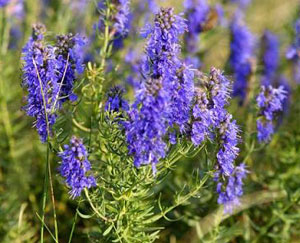This article by T. A. Breaux is part 2 of 4. Read part 1 The Pros and Cons of the Absinthe Revival here
The Artisan Distiller and the Modern Market

Sometime in 1987, while the author was bartending his way through college, the bar staff were informed that no longer would the preparation of orange, cranberry and grapefruit juices be required before the opening hour. These tedious duties were to be relieved by the arrival of a modern marvel, referred to as a juice gun, which rendered the preparation of fresh juices obsolete.
Assurances were given that the artificial concentrates dispensed from unrefrigerated metallic bags would be so good, patrons would scantly notice a difference. Where the difference would be realised, it was claimed, was on the bottom line. As time would tell, only the latter turned out to be true. The benefit the establishment stood to gain from this modernisation was simply the ability to dispense products of lesser value under the same descriptions.
This account is reflective of a theme that gained momentum throughout the 20th century – the trend to modernise and therefore ‘improve’ traditional spirits, liqueurs, bar ingredients, mixers and soft drinks by reducing production costs. In this context, many such ‘improvements’ serve to improve profit margins for the producer, but at the expense of the original character of the product.
Nowhere has this trend made itself more apparent than in the realm of fruit and herbal spirits and liqueurs, of which absinthe is a part. Today, the artisan distiller finds himself enveloped by an industry that is largely compounded, cold filtered, and artificially coloured.
Many such modernised products have been tailored to be non-offensive to the largest possible number of buyers, at the lowest possible cost, but always under the assurance that the precious liquid within the bottle that is ‘inspired by the original recipe’ is the equivalent of the original recipe, even when older bottles of the same product clearly reveal otherwise. As the honorable Wayne Curtis so bluntly denotes in The Secret Ingredient (The Atlantic, April 2012), it is because liquor makers aren’t typically required to list ingredients that such marketing fabrications persist unchecked.
Such was the situation in the realm of absinthe at the dawn of the 21st century, when hardly a single absinthe product could be found that wasn’t compounded from essences and dye, and yet all lay claim to ‘original recipes’. For the artisan distiller, finding one’s place in a market so driven by margins and suspect marketing seems akin to swimming uphill. Fortunately however, somewhere along the way, some began to realise that all this modernisation had unwittingly rendered it virtually impossible to accurately replicate many classic cocktails, and the door of opportunity swung open.
Absinths of bad quality are often made, some of them manufactured without distillation and with essences to replace the plants and seeds which are used in the genuine process. – Beverages and Their Adulteration, Harvey W. Wiley, 1919, USA
The Science and Art of Distilling Botanicals

The three elements that comprise a quality absinthe are the base spirit, the pot still, and the botanicals. For those who make the science of distillation their art, the pot still serves as the brush, the base spirit the canvas, and the plants, herbs, and seeds that provide the colour (both figuratively and literally).
The basis of a quality absinthe therefore lies in the distillation of quality botanicals. This is as valid today as it was during absinthe’s heyday. In an age where one finds self-labeled ‘distilleries’ where no actual ethanolic distillation takes place, this archaic, artisanal process seems almost counter intuitive where the production of a legally undefined spirit is concerned. Nevertheless, crafting a 19th century product true to tradition requires adherence to 19th century materials and methods.
Even the most amateur of oenophiles knows the quality and character of the grape exerts a profound impact on the overall quality of a wine. To a significant extent, this can be said about the character of hops and the resulting ale, that of juniper berries and gin, and the same for the plants herbs and seeds that collectively form the flavour of absinthe. Variances in soil, terrain, and climate impact the balance and intensity of the essential oils produced by plants, just as they affect the flavour of a grape.
Furthermore, some aromatic plants will not flower except under ideal conditions, which is particularly important when the flowering tops of said plant are specifically sought for distillation. While these things seem logical and straightforward in principle, there is far more awaiting those who aspire to delve into the deeper picture.
The prerequisite botanicals that represent the foundation of any traditional absinthe, green anise, sweet fennel, and grande absinthe, are represented by various cultivars within their respective species, each of which presents notable characteristics that are inevitably manifested within the final liquor. Technically speaking, there is no right or wrong when it comes to the selection of specific cultivars for distillation, although as described throughout historical literature, certain types better lend themselves to achieving particular flavour profiles. The same applies to any of the numerous other botanicals traditionally used in the preparation of absinthe, virtually all of them historically originating from continental Europe.
Also worthy of clarification is the fact that absinthe is, and has always been, an anise flavoured spirit. When it comes to the flavour of anise (or aniseed as some call it), the vast majority of anise flavoured spirits and liqueurs in today’s market are produced by simply compounding the inexpensive commercial essence of Chinese star anise (Illicium verum) with alcohol.
This includes many absinthe products that claim pedigree from ‘original recipes’, which are technically no different than any other inexpensive anise spirit or liqueur, and therefore undeserving of their substantially higher shelf prices. Aside from the obvious differences between compounding with essences and ethanolic distillation, the organoleptic differences between Chinese star anise and green anise are at least as vivid as those between cassia and Ceylon cinnamon respectively.
One thing that remains a constant in the wake of the many variables is the fact that only those who are truly passionate about absinthe are those who are discriminating about the origin, type, and cultivation of plants used.
Distillation is effected in apparatus, the form and arrangement of which are appropriate to the liquids or substances to be treated. Everything the earth produces may be its object and aim, but it is chiefly for the distiller of spirits and the liquorist, for flowers, plants, fruits, seeds, roots, and in fact every substance that contains an aromatic, saccharine, or amylaceous principle. – Traité de la Fabrication des Liqueurs, P. Duplais, 1871, France.
The Impediments of Modern Legalities

While modern legalities have achieved little where protecting the historical integrity of absinthe is concerned, they have certainly regulated the content, although not necessarily in a manner beneficial to the category or those who abide by traditional production methods. Whereas the absence of even a basic legal definition facilitated the debacle that became the absinthe category at the end of the 20th century, what regulation did exist made it difficult for the artisan distiller to function in the traditional fashion.
Upon standardising food and beverage laws across EU member nations in 1988, absinthe was effectively re-legalised in those countries where it had long since been banned. The difference was that like everything else, it would be subjected to modern standards that would prevent the rebirth of the adulterated, cheaper products that poisoned poor alcoholics in the 19th century. Deep within the French government however, a decree was slipped into effect that placed severe restrictions on fenchone (from fennel) and pinocamphone (from hyssop) specifically in ‘absinthe-like’ products. Any such product found in violation would satisfy the legal definition of absinthe, which would instantly resurrect the original 1915 ban and all the draconian penalties therein.
In 2007, the author and his associates (Jade-Combier) was the only one found to have violated that obscure regulation, paid thousands of Euros in fines to avoid jail time, and earned the dubious distinction of being the last producer in France to be charged and fined under the original absinthe ban. Rather than conform, it was decided the validity of that rule should be legally contested. After two years of independently funded legal efforts, it was agreed that the decree in question was scientifically unfounded, and it was summarily abolished. This expensive and time consuming exercise opened the door for other French distillers to legally use appropriate volumes of fennel again in their spirits.
On the American front, the 95-year ban on absinthe was finally lifted (2007) as a direct result of the efforts of the author and his associates (Viridian Spirits), which required the better part of a year. It seemed odd that a country could enforce a ban on a product that was not legally defined, and violated no written law.
Of all the legal impediments to the artisan distiller however, none is more often mentioned than that which regulates the content of thujone, a compound found in grande absinthe and many other plants. Where the distillation of absinthe is concerned, thujone is simply a trace artifact, and is not a functional component of the spirit in the way it has been portrayed in urban myth. It is not a hallucinogen, nor does it appear in vintage absinthe in any significant concentration (as modern science has conclusively demonstrated).
While the EU has thoughtfully adopted the WHO recommendation that spirits that employ Artemisia sp. be permitted to contain up to 35ppm (a minuscule 0.0035%) thujone, several other countries (e.g. USA) restrict producers to a paltry 10ppm. This does nothing except make QA/QC a potentially tedious affair for responsible distillers, while industrial mixers of commercial flavourings and dye encounter no such qualms.
To put the ridiculousness of this regulation into perspective, countries like the USA comparatively allow up to 25ppm of prussic acid in finished foods and beverages. Prussic acid, referred to in WWII history books as Zyklon B, is a fanciful term for hydrogen cyanide – a deadly substance. If there is any scientific study that supports the notion that thujone is 2.5 times more harmful than hydrogen cyanide, it has thus far managed to remain incredibly elusive.
All things considered, until other countries follow Switzerland’s lead in adopting a proper legal definition that differentiates compounded and distilled absinthes (as with gin), and until existing regulations are updated such that they agree with modern science, the road travelled by the artisan absinthe distiller forever leads uphill.
If a product is little studied analytically, it is the liquid sold under the trade name of “Extrait d’Absinthe” or “Absinthe”. I have not seen anywhere a definition of this consumer product. This definition is necessary however, if one wants to determine when the product sold under that name is or is not absinthe, and it important first to establish it. – Analyse des Absinthes, M. A. Hubert, 1901, France
The following parts to this article will be appearing soon:
Part 3 – How to Evaluate and Taste Absinthe
Part 4 – Absinthe in Classic Mixology, and How to Use it Today

